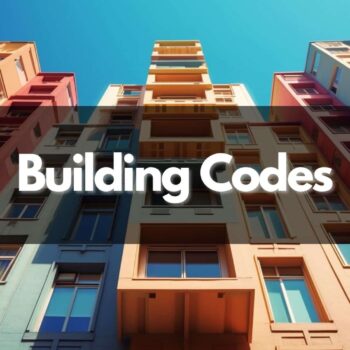Constructing or building a home is a more personalized experience than buying an already constructed one. However, just like buying a home, constructing one is also a big investment. Fortunately, construction loans help borrowers get funds to construct homes from scratch. With that said, there are different types of construction loans that homeowners can choose from. In this post, I’ll define construction loans, discuss how they work, and explain their mechanism with the help of examples.
What is a Construction Loan?
A construction loan is a short-term loan that provides cash to construct a residential property. These loans typically offer high-interest rates and have a duration of one to three years. During this repayment term, the borrower must complete the construction of the house and receive a certificate of occupancy. Construction loans may finance various construction processes, including buying land, obtaining permits, drafting plans, and labor and material costs. Conventional loans and mortgages allow borrowers to purchase existing homes, whereas construction loans allow borrowers to build a home from scratch.
In a construction loan, the land or fixtures are used as collateral. Thus, a construction loan is secured by the property it finances. However, since the loan isn’t secured by a completed project, the application and qualification for this type of loan are more complicated. A construction loan also acts as a line of credit because the payments are disbursed at various stages of construction as needed in the form of installments and draws.
How Does a Construction Loan Work?
Homebuyers and builders usually take a construction loan to construct a home according to their preferences. To apply for a construction loan, the borrower must submit all the financial documents, plans, and construction timelines. If the lender approves the loan request, the borrower can draw funds according to the stages of construction.
During the construction process, an inspector or appraiser keeps monitoring the phases and can also authorize the borrower to obtain more funds if needed. When the construction is complete, the loan is converted into a mortgage, and the borrower starts making payments that contain interest and principal. The following are the different stages of a construction project during which payments are made by the lender in the form of a construction loan:
Slab
Slab is the first phase of a construction project. In this stage, the base of a construction project is laid in the form of a concrete slab. The funds required are around 15 to 20% of the total loan amount. Once the slab cures, the builders will connect drains and plumbing on the base.
Frame
The second stage of the construction process is when the builder constructs a frame for the project. This stage involves setting up a layout for different stories of the project. The funds required at this stage are around 20% of the loan amount.
Lock-up
The lock-up stage involves building the home’s exterior, which includes roofs, walls, doors, windows, and other parts of the house. ‘Lock-up’ means the builder is locking up the final skeleton of the house. At this stage, the funds required are around 20% of the loan amount.
Fit-out
This is the most costly stage of the construction process. During this stage, the builder installs fixtures and internal fittings, including switchboards, lights, flooring, and plumbing. Some builders might even start working on countertops, kitchens, and benchtops. Funds needed at this stage are 30% of the loan amount.
Completion
This is the final stage in which all the incomplete aspects of the previous stages are checked. For instance, the painting is completed, and electricity and plumbing issues are sorted out. During this phase, site clean-up is also done to make it clutter-free and give it a final look. Funds required at the last stage are only 10% of the total amount.
Types of Construction Loans
Whether the borrower is looking to construct his own home or to hire a builder, construction loans provide funds to carry out the construction. There are different types of construction loans; the following is a quick introduction to the different types of construction loans:
Construction-to-permanent loans
With construction-to-permanent loans, the loan is available for the whole construction of a home. Once the house is completed and the homeowner moves in, the loan is converted into a permanent mortgage that spans up to 15 to 30 years. During the repayment period, the homeowner pays back the loan in regular monthly payments.
Construction-only loans
The construction-only loans allow the borrowers to use the loan amount for materials and purchasing other things required to construct a home. However, once the loan is completed, the homeowner must obtain another mortgage to repay the loan. This type of construction loan doesn’t convert into a permanent mortgage.
Owner-builder loans
To obtain this type of construction loan, the borrower will need a license as a contractor. License is required as, in this case, the homeowner doesn’t hire a contractor; instead, he builds the home independently. Without a license, obtaining this type of loan is difficult as no lender will be willing to approve this loan.
Renovation loans
Renovation or rehabilitation loans provide finances for large home improvements to an already constructed home. These loans are also classified as construction loans as the home improvement or renovation is large enough to make significant changes, for instance, for building a garage, adding a living room, or making an in-ground swimming pool.
Construction Loans vs. Mortgages
Construction loans are designed specifically to finance the construction of a property, whereas mortgages are designed to finance already-built homes. Following are the key differences between construction loans and mortgages:
| Mortgage | Construction Loan | |
| Interest Rate | Fixed or adjustable | Variable |
| Down Payment Required | As low as 0% | 20% or more |
| Monthly Payments | Interest and principal, including tax and insurance | Only interest payments during construction |
| Repayment Term | Up to 30 years (long-term) | 1 to 3 years maximum (short-term) |
| Funds Disbursement | Lump sum | In phases as needed |
| Minimum Credit Score | 580 or more | 680 or more |
| Early Repayment Penalty | Yes | No |
Construction Loan Examples
Example 1: Suppose Person A wants to buy vacant land and build a house. The total cost to purchase land and then construct a house is around $350,000. A lender approves his request for a construction loan, and he asks for a down payment. The following are the details of the construction loan Person A obtains:
- Cost of construction: $350,000
- Down payment: $17,500
- Loan amount: $332,500
- Length of project: 12 months
- Interest rate: 4.5%
- Interest-only payment: 1,246.88
During the construction process, person A has to pay $1,246.88 per month as an interest-only payment. The total loan that remains is $332,500 after the down payment. The loan amount will not be provided as a lump sum, but he can draw cash as needed, according to the construction stage. Once the construction is complete, the construction loan converts into a mortgage, whose details are as follows:
- Loan amount: $332,500
- Term: 29 years
- Principal and interest payment: $1,712.35
Now that the construction is complete and person A has moved into the house, he has to repay the loan to the lender. The property’s value has also increased to $400,000 after the project was completed. Person A will now make monthly payments of $1,712.35 for 29 years to repay the loan that he used for construction.
Example 2: Person B obtained a construction loan of $525,000 for her home. However, she is confused about how this loan amount will be disbursed during the construction period of 18 months. She has paid $26,500 as a down payment and has $498,750 as a loan balance. The contractor explains that she can use the loan amount according to the following construction stages:
- Cost of construction: $525,000
- Down payment: $26,500
- Loan amount: $498,750
- Funds for slab stage: $78,750 (15% of $525,000)
- Funds for frame stage: $105,000 (20%)
- Funds for the lock-up stage: $105,000 (20%)
- Funds for fit-out: $157,500 (30%)
- Funds for completion: $52,500 (10%)
This is the loan disbursement schedule throughout the construction project. After the completion of the project, when person B moves into the house. She obtains a new mortgage to pay back the loan of $498,750 to the lender. She will now pay back the loan like this:
- Loan amount: $498,750
- Monthly payment: $2,590.49 (principal and interest)
- Loan term: 28 years and six months
- Interest rate: 4.5%
Construction Loan Frequently Asked Questions
How to Qualify for a Construction Loan?
Qualifying for a construction loan is difficult. The lenders may require a down payment, a strong personal credit score, financial documents, and financial stability to provide a construction loan. Some of the documents the borrower will need include the builder’s bank account details, a copy of council permits and building plans, a copy of a signed industry-standard fixed-price contract, and copies of insurance.
How Long Does it Take to Obtain a Construction Loan?
On average, construction loans take around 30 to 60 days to approve. First, the lender reviews the information in the documents provided by the borrower, then supports it. If the lenders get all the required information at once, loan approval can be faster. The appraisal process doesn’t take more than 60 days if the information is complete.
What Does a Construction Loan Cover?
A construction loan covers various construction costs, including the cost of purchasing land, contractor labor, building materials, and permits. However, it is essential to discuss the details with the lenders so that everything is included according to the borrower’s preference.
What to Know for the Real Estate Exam
Construction loans are loans obtained for constructing homes. These loans are short-term, usually lasting for a year and sometimes around two to three years. With these loans, the borrower doesn’t get a lump sum to construct the house but incremental payments during the various stages of construction.
During the construction period, the borrower pays interest only as monthly payments to the lender. Once the construction is complete, the borrower has to pay back the loan as a mortgage. Sometimes construction loans convert into mortgages; in other cases, the borrower has to obtain a new mortgage to repay the loan amount. Understanding the concept of construction loans is essential while preparing for a real estate exam. I hope that you’ve now completely understood how these loans work. Learn more real estate definitions through our flashcard app.












